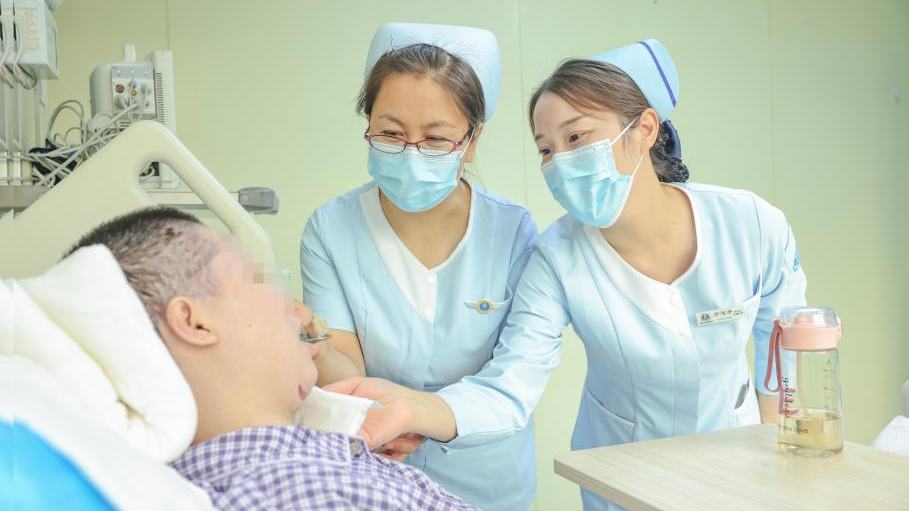
Doctors at the Xijing Hospital perform the multi-gene edited pig skin grafting surgery for a severely-burnt patient. /Xijing Hospital
Doctors at the Xijing Hospital perform the multi-gene edited pig skin grafting surgery for a severely-burnt patient. /Xijing Hospital
A Chinese hospital has successfully transplanted multi-gene edited pig skin to a patient suffering from severe burns, and the surgery has seen good therapeutic effects, the hospital announced on Thursday.
Experts say this breakthrough marks an important step forward in the clinical application of xenotransplantation research.
The surgery was performed at the Xijing Hospital of Air Force Medical University (Xijing Hospital) in northwest China's Shaanxi Province in June. Back then, the patient was suffering from 90 percent of total body surface area (TBSA) burns, including 50 percent of the third-degree burns, or the most serious level.
With a series of preliminary treatments, such as anti-shock, life support and anti-infection, the vital signs of the patient were temporarily stable.
Following several rounds of multidisciplinary research and discussions, the hospital finally developed a sophisticated treatment plan, which combines the grafting of multi-gene edited pig skin with that of autologous skin, CGTN learnt from the hospital.
Han Juntao, director of the hospital's Burns and Dermatologic Surgery Department, told CGTN that after the surgery, the transplanted multi-gene edited pig skin survived well without significant rejection reaction, and that the patient's autologous skin expanded and the pig skin fell off some 50 days later.
After that, the team performed a series of operations again to help the patient ride out the challenges from shock, infection and skin regeneration before the wounds healed completely.

Nurses at the Xijing Hospital take care of the patient after the surgery. /Xijing Hospital
Nurses at the Xijing Hospital take care of the patient after the surgery. /Xijing Hospital
In August, samples of the patient's blood and skin were sent to two third-party institutions for genome sequencing and other tests. The results indicate that no pathogenic microorganisms, including porcine endogenous retroviruses, are found in the patient's blood and skin tissue.
The treatment of extremely severe burns has long been very difficult. The use of allogeneic skin to temporarily cover the burns is the key for patients to survive.
However, the source of allogeneic skin is very limited. Surgeons have also tried to cover wounds with ordinary pig skin, while the acute rejection has limited the therapeutic effects.
Han said that the clinical effects of this operation have exceeded their expectations, which further confirms that it is promising that the multi-gene edited pig skin can replace allogeneic skin and has become a new choice for clinical treatment of severely burned patients.
"Meanwhile, the development of technologies, such as repeated harvesting and regeneration of gene-edited pig skin, and long-term storage of gene-edited skin, will accelerate the construction of our hospital's strategic reservation of xenogeneic skin, which is expected to benefit a lot more patients with burns in the future," said Han.
"This provides a new approach for the clinical treatment of severely burned patients. It has confirmed the safety and effectiveness of xenotransplantation in clinic," said Dou Kefeng, a well-known surgeon and a member of the Chinese Academy of Sciences.
"It is also an important breakthrough in the field of xenotransplantation research," Dou added.